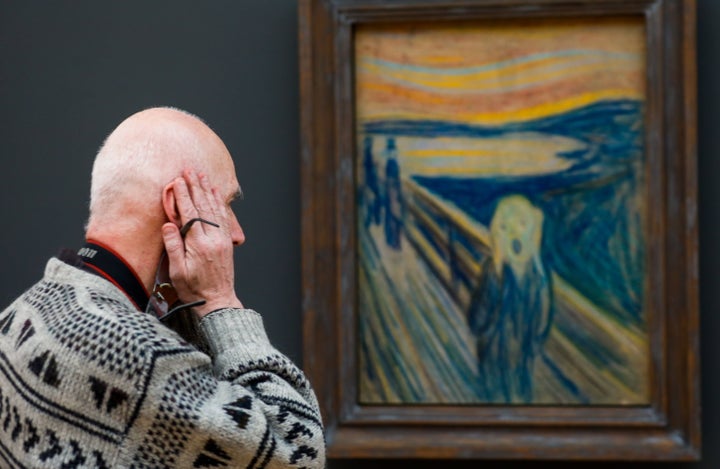
We’re here to guide you through the coronavirus pandemic. Sign up to the Life newsletter for daily tips, advice, how-tos and escapism.
It’s mid-July, did you know? Summer’s racing past, not that we’d realise it for lack of plans. Just as we think we may be okay to start doing things again, fresh warnings from the WHO about the virus reach us, heaping more stresses on our lives as we attempt to negotiate a balance for the ‘new normal.’
But the more we try and find some balance, or get into a new routine, the more we’re reminded that life right now is so vastly removed from normal. Isn’t it time we forgot the pub and tried to let out our stresses in a more organic way.
According to Iceland (the country, not the shop) the answer to that question is most definitely “yes” – the country’s tourist board is asking people to scream loudly into their phones and send the recordings over, so they can be played on one of seven remotely-located speakers in the Icelandic countryside.
Not only will your frustrations literally be heard, screaming is cathartic for us, and actually relieves stress, as Zoe Aston, therapist and mental health consultant, reminds us on the website for the project.
“Screaming literally allows your amygdala to release stress”
- Zoe Aston, mental health consultant
“Screaming as a therapeutic tool was developed in the 1970s as a way to release pent-up emotion,” she says. “What we don’t realise is that the psychological response to wanting to scream lights up a part of our brains called the amygdala.
“Part of the benefit of screaming comes from being able to make a loud noise into a wide, open, undisturbed space. This literally allows your amygdala to release the stress stored there and move forward.”
Brilliantly, visitors to the website can already listen to a cacophony of screams from all over the world. Screams sent in include entries from Ieva in London, Gabrielle in Los Angeles, Kay in Hamburg, Simone in Denmark and Ryan in Manchester – you can listen to them all here.
Sure, pets are nice to help us feel less stressed, and going on daily walks, runs and pint sessions can help us feel better about lockdown life, but a good, solid scream? We haven’t tried it yet but we can’t deny we’re totally into the idea.
And while we’re on the subject, here are some other great screams if you’re in need of some sonic inspiration before you find a quiet spot to let out your own...
The Wilhelm Scream
Used in over 400 movies and TV shows, The Wilhelm Scream is a recorded scream that was first used in 1951 in the film Distant Drums. The scream is still used in films today, and more familiar films to feature it as a sound effect include Star Wars, Indiana Jones, Toy Story and Star Wars.
Curious? Listen to The Wilhelm Scream, probably the world’s most famous sound effect, on (where else?) Wikipedia.
James Blake’s moody song, The Wilhelm Scream
“I don’t know about my dreams, I don’t know about my dreaming anymore,” sings a reverb-y James Blake in The Wilhelm Scream. “All that I know is I’m falling, falling, falling, falling. Might as well fall.”
The Wilhelm Scream is multi-instrumentalist Blake at his most existential: all doubtful thoughts, no explanations and a sense of sinking deep within blankets of dread-laden synth.
It doesn’t sound much like an actual scream, but all that matters is it feels like one. Listen below with some good headphones.
Edvard Munch’s The Scream
Norwegian Expressionist artist Edvard Munch created The Scream in 1893, and the pained expression of the person profiled in the painting is said to represent anxiety and the human condition.

More recently, his scream has become the face that launched a thousand memes and the most prescient expression of lockdown ennui we’ve seen.
Apparently, Munch was originally inspired by a sunset which turned the clouds a “blood red”, during which he said he experienced “an infinite scream passing through nature”.
Shame he’s not around today to take a trip to Iceland to hear the very same. Talk about life imitating art!